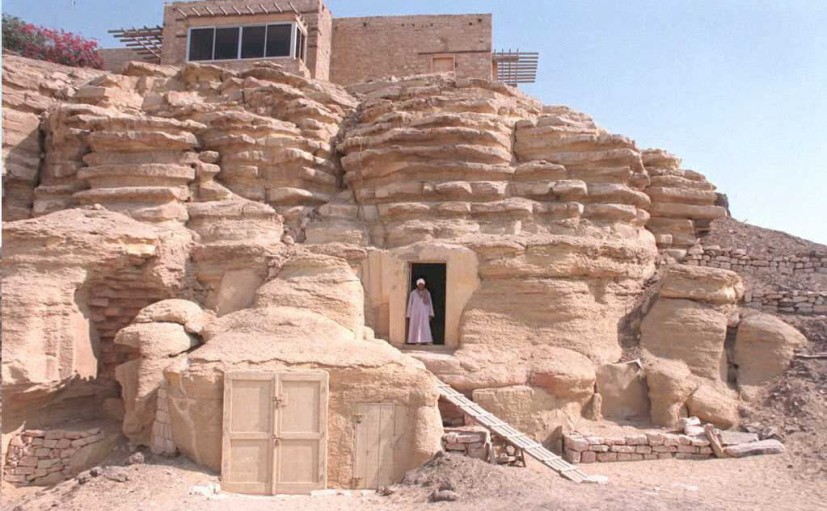Egyptian and Japanese archaeologists respectively from the Supreme Council of Antiquities and Waseda University, have recently discovered an ancient tomb in the famed Saqqara necropolis, which is thought to be over 4,500 years old.
Within the dig site, located approximately twenty miles south of Cairo, scores of varying archeological finds including ancient Egyptian artifacts and human remains were also uncovered.

Finds Within the Newly Discovered Vast Burial Grounds
According to a report by Ahram Online, the archaeologists dated the tomato to be somewhere between the range of 2649 BC and 2150 BC.
Among the finds were a colored Egyptian mask and a burial that housed the remains of a small child, both of which are believed to have dated to the Second Dynasty. In addition to those, a coffin is traced a bit later down around 1550 to 1295 BC when the 18th Dynasty took place.
A separate burial dated to this period was also found containing an exquisite alabaster vase, among other burials that were linked to eras that happened later on.
Perhaps the key findings are a pair of terracotta Ushabti figurines depicting Isis, the Egyptian goddess of magic and healing typically honored during funerary rites, alongside Harpocrates, the young deity who is prominent for representing silence and secrets during the Ptolemaic periods.
Also, several other artifacts including amulets, pottery models, and pieces of broken pottery inscribed with ancient Egyptian cursives.
A Successful Discovery Leading to New Insights
In a release posted to Facebook, Egypt's Ministry of Tourism and Antiquities shared that the joint mission between Egypt and Japan has been successfully fulfilled which uncovered several "architectural elements, burials, and archaeological finds in the Saqqara region."
"The mission has carried out recording and archaeological documentation of all the archaeological finds found this season," the ministry wrote.
Nozomu Kawai, head archeologist of the Japanese team involved in the mission, echoed this positive sentiment surrounding the initiative, telling the Egyptian media outlet that this latest discovery will lead to new "invaluable insights into the history of this region."